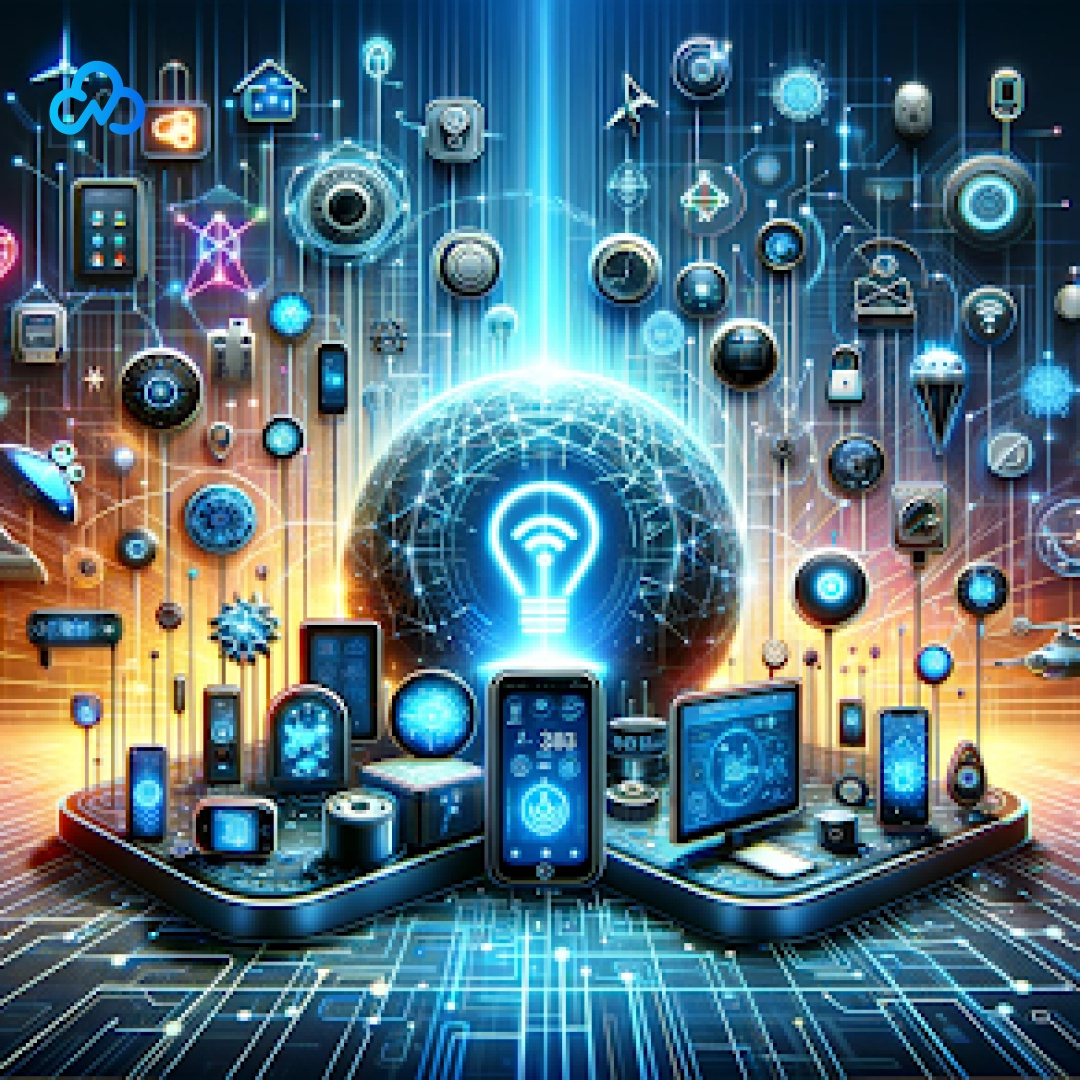In the era of interconnected technologies, IoT devices stand as the linchpin, weaving together the realms of hardware, software, and the cloud. Beyond being mere repositories of technology, these devices harbor a life of their own, creating a holistic and interconnected ecosystem that forms the backbone of the Internet of Things. Let's delve into the intricacies of IoT devices and explore how they seamlessly integrate hardware, software, and the cloud.
IoT devices as the nexus of hardware, software, and cloud
The Hardware Dimension: Unraveling the Essence of IoT Devices
At the heart of every IoT device lies its hardware, defining its physical existence. Ranging from the simplistic, like a microphone connected to a WiFi network, to the highly sophisticated, such as medical imaging equipment performing 3D brain scans, IoT device hardware is diverse and context-dependent.
The core of these devices encapsulates compute capacity—a fusion of processor, memory, and storage. This computational powerhouse acts as the device's central brain, translating analog interactions with the physical world into digital signals for processing and transmission over a network. The sophistication of this compute hardware varies, mirroring the diverse applications of IoT devices.
IoT devices can be broadly classified into two categories: constrained devices and unconstrained devices. Constrained devices, exemplified by microcontroller units (MCUs), possess limited compute capacity, making them suitable for applications like home appliances, sensors, and tracking tags. On the other hand, unconstrained devices, resembling miniaturized computers such as the Raspberry Pi, exhibit more robust hardware capabilities. They can run full-blown operating systems, handle multiple applications simultaneously, and even include specialty hardware like AI processing units.
The Software Dimension: Guiding IoT Devices through Interaction
In the realm of IoT, software acts as the guiding force, determining how devices interact with their environment. At its simplest form, IoT software reads data, packages it, and sends it to the cloud. However, as devices become more sophisticated, the software's role expands. From ATMs dispensing money to self-checkout kiosks scanning groceries, IoT software facilitates physical interactions with the environment. It orchestrates the collection, transmission, and reception of data, responding to events in real-time.
The Cloud Dimension: Enabling Connectivity and Beyond
While technically both hardware and software, the cloud, from an IoT device perspective, is an external entity that facilitates data exchange. IoT devices communicate with the cloud, sending inputs and receiving outputs. This interaction forms a defining characteristic of IoT devices, establishing a seamless connection between the physical device and the broader digital landscape.
Cloud services and edge computing play pivotal roles in managing IoT devices, assisting with data-related tasks, and facilitating internet connectivity. Edge devices, equipped with server-grade compute, interact with other IoT devices, providing services closer to the devices they serve. Microsoft, as a tech giant offering hardware, software, and cloud services, is positioned uniquely in this space, providing a comprehensive suite of solutions for IoT.
Microsoft's Role in the IoT Landscape: A Comprehensive Solutions Provider
As a company deeply rooted in hardware, software, and cloud services, Microsoft emerges as a key player in the IoT landscape. The company's expertise spans across these three domains, offering a diverse range of solutions for IoT devices. From Azure-centric IoT devices to cloud offerings tailored for specific device types, Microsoft's ecosystem is designed to cater to the evolving needs of the IoT industry.
Understanding the intricate relationship between hardware, software, and the cloud is crucial for navigating the evolving landscape of IoT. Microsoft's journey in this space mirrors the ever-changing demands of the industry, and their position as a tech powerhouse ensures a forward-looking approach to IoT solutions.
Conclusion: Navigating the Convergence of Realms
In conclusion, IoT devices serve as the nexus, seamlessly connecting the worlds of hardware, software, and the cloud. The evolution of these devices, from constrained to unconstrained, reflects the dynamic nature of IoT applications. Microsoft's role as a comprehensive solutions provider underscores the importance of a holistic approach to IoT, where hardware, software, and the cloud converge to create a connected and intelligent ecosystem. As we continue this journey, understanding the nuances of each domain becomes imperative for unlocking the full potential of IoT in the digital age.
For any software consultant , application development solutions visit our websites.


No comments yet